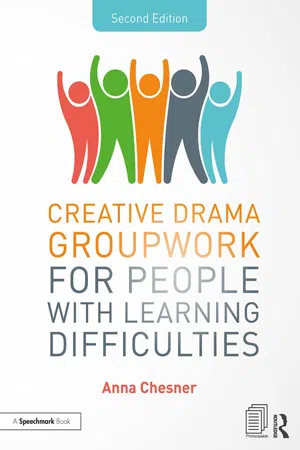
Creative Drama Groupwork for People with Learning Difficulties
Anna Chesner
- 274 Seiten
- English
- ePUB (handyfreundlich)
- Über iOS und Android verfügbar
Creative Drama Groupwork for People with Learning Difficulties
Anna Chesner
Über dieses Buch
The revised second edition of this practical manual is filled with easy-to-follow exercises and activities designed to facilitate creative drama sessions for people with learning difficulties. The activities in this book bring together music, theatre, movement and storytelling to not only develop fun and engaging group sessions, but to build confidence, increase self-esteem, and develop social and emotional awareness in group members. Highly sensitive to the range of learning needs and physical abilities of group members, the activities have been created to be engaging for a broad range of individuals regardless of age and ability, and can be adapted for use in a multitude of sectors such as education, psychology and speech and language therapy. Key features of this edition include:
• New chapters exploring mindfulness, and the importance of reflection
• Fully photocopiable resources including a session notes template to evaluate the impact of the creative drama group and collect useful data for the writing of reports
• Activities organised around key elements of creative drama, such as sensory work, life skills role-play, improvisation and de-roling
With its wealth of guidance, practical and adaptable activities and easy-to- follow structure, this is an invaluable resource for anybody leading or supporting children, young people and adults in creative drama.
Häufig gestellte Fragen
Information
